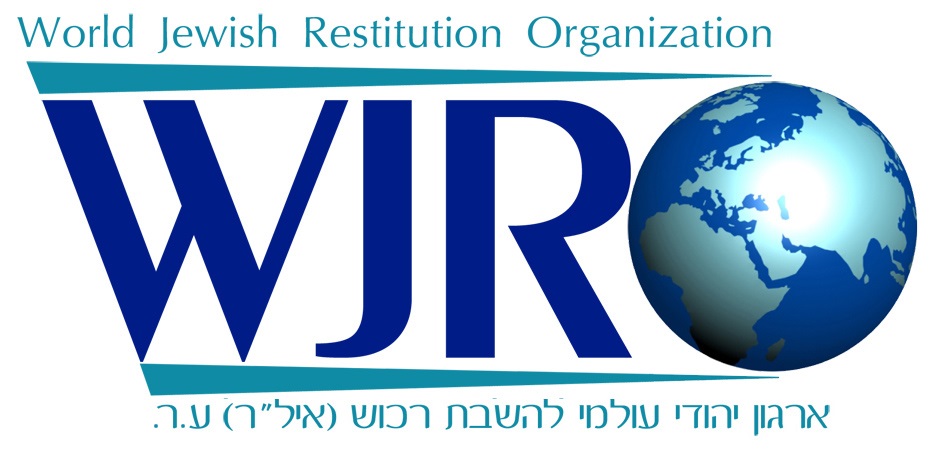
NEW REPORT RECOMMENDS CONTINUED PROVENANCE RESEARCH AND ESTABLISHMENT OF COMMITTEE, CITING BEST PRACTICES FOR THE WASHINGTON CONFERENCE PRINCIPLES ON NAZI-CONFISCATED ART, WHICH WERE DEVELOPED WITH THE LEADERSHIP OF WJRO AND THE U.S. DEPARTMENT OF STATE
Report Addresses Accountability and Transparency in Nazi Looted Art Restitution at the Emil Bührle Collection Foundation at the Kunsthaus Zürich
(New York, NY) June 28, 2024 — The World Jewish Restitution Organization (WJRO) welcomes the newly released report on the status of provenance research of artworks at the Emil Bührle Collection Foundation at the Kunsthaus Zürich. This significant report, commissioned in May 2023 by the city of Zurich and the trustees of the Kunsthaus, marks a critical step in addressing the rightful ownership of artworks that were sold because their owners were forced to flee during the Nazi era.
The report, prepared by Prof. Dr. Raphael Gross, a member of the German Advisory Commission on the return of cultural property seized as a result of Nazi persecution, recommends forming an interdisciplinary panel to apply examination frameworks for Nazi-related confiscations, adhering to the Best Practices for the Washington Conference Principles on Nazi-Confiscated Art, which were developed with leadership of WJRO and the U.S. Department of State. The report also emphasizes the necessity for continued provenance research, focusing on clarifying the previous Jewish ownership and the persecution-related confiscation of the works from the Bührle Collection. It evaluates the provenance of works from the collection currently on loan to the Kunsthaus Zürich (approximately 200 pieces). Additionally, it suggests a public debate on the ethical presentation of the Bührle Collection at the Kunsthaus Zürich.
“This report is a powerful example of accountability in the global effort to address historical injustices,” said Gideon Taylor, President, World Jewish Restitution Organization (WJRO). “We urge other institutions to follow Zurich’s lead and adopt the Best Practices for the Washington Conference Principles on Nazi-Confiscated Art. Restitution is about restoring cultural heritage and dignity to those affected by the Holocaust, ensuring that these treasured artifacts are returned to their rightful owners, acknowledging their profound losses, and honoring their memories.”
Prior to this report, on June 14, the Bührle Foundation removed and began investigating the provenance of five artworks from the Kunsthaus Zürich museum. In the Foundation’s announcement, they also cited the Best Practices for the Washington Conference Principles on Nazi-Confiscated Art, underscoring the importance of adhering to these standards to ensure justice and the rightful restitution of cultural treasures.
“The removal of five artworks from the Kunsthaus Zürich museum was an important first step, and this report further underscores the need for continued scrutiny and the establishment of a dedicated commission to ensure justice,” added Taylor.
The Emil Bührle Collection has been a subject of ongoing controversy due to Bührle’s ties to Nazi Germany and his acquisition of looted art. Bührle, a Swiss industrialist who made his fortune through arms sales to the Nazis, amassed a vast art collection, including works acquired under dubious circumstances. Recent investigations revealed that Bührle employed young women in near-slave labor conditions and took advantage of sales from Jewish owners who were fleeing persecution.
The report coincides with a broader international movement towards the restitution of Nazi-looted art. Recently, the “Holocaust-Era Looted Cultural Property: A Current Worldwide Overview” report by WJRO and the Conference on Jewish Material Claims Against Germany (Claims Conference) highlighted that while seven countries have made major progress in art and cultural property restitution, 24 out of 47 surveyed have made minimal to no progress. The report emphasizes the need for attention to art and cultural property in private collections as a vital area for future focus.
Moreover, the historic endorsement of Best Practices in art and cultural property restitution by 25 countries, including Switzerland, as announced at a joint event by WJRO and the U.S. Department of State in March 2024, underscores the importance of these initiatives. These Best Practices build on the 1998 Washington Conference Principles on Nazi-Confiscated Art, aiming to facilitate the restitution process and overcome barriers faced by heirs and claimants. In a major breakthrough, these new Best Practices explicitly stated that sales by a persecuted person during the Holocaust can be considered equivalent to an involuntary transfer of property, which may be the case in many of the items of artwork in this collection.
WJRO encourages other countries, museums, auction houses, dealers, and private possessors to adopt these Best Practices, thereby ensuring justice and the reunification of cultural treasures with their rightful owners.
# # #
For media inquiries please contact pr@wjro.org.il





